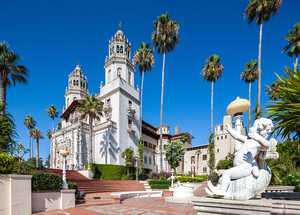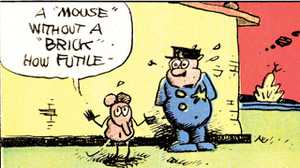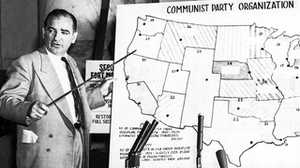When the Newsies Took on William Randolph Hearst
For two weeks in the summer of 1899, a union strike crippled the country’s most powerful publisher.
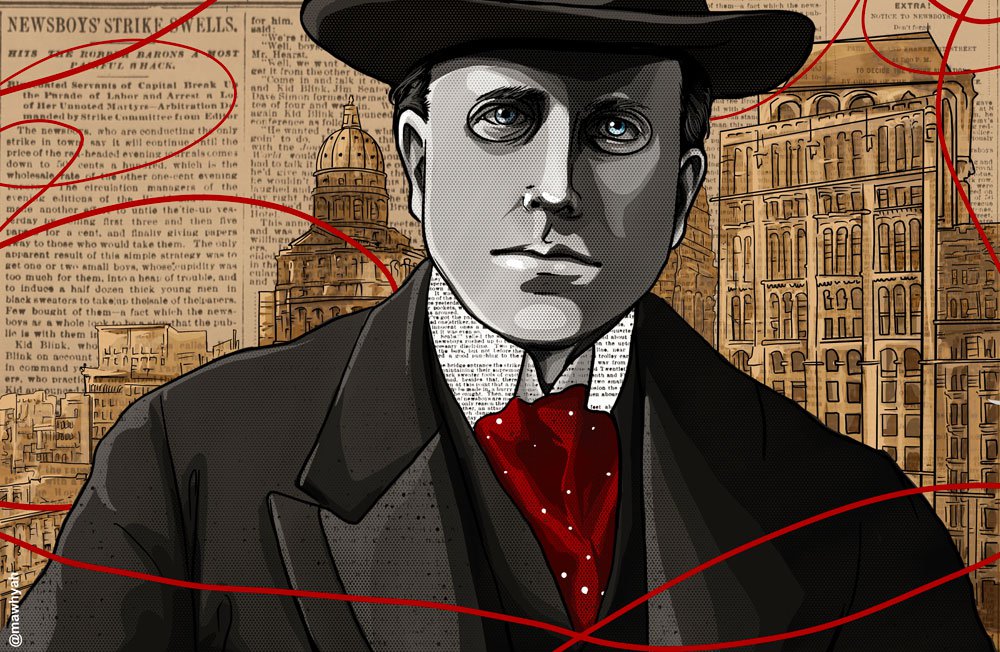
William Randolph Hearst wanted to go to war, and he wanted to go in style. In 1895, his newspapers began calling for the United States to bring an end to Spanish occupation of Cuba. When, in April 1898, Congress passed a joint resolution authorizing President McKinley to use force on the island, Hearst had rockets set off from the roof of the building of his newspaper, the New York Journal. Hearst arranged to go to Cuba himself and had a boat refitted to meet his standards for travel south. The steamer was loaded with darkrooms, printing presses and medical supplies; it was also equipped with huge quantities of ice, his favorite foods and chefs to cook it. The Journal splurged on its war coverage as well. The paper sent special correspondents to Cuba and to the war’s second front in the Philippines, published extra wartime editions and ran contests with large money prizes for its readers.
Meanwhile, Hearst was waging his own war at home. The Journal, a newspaper he’d purchased to gain entry into the New York City market, was in its third year of fierce competition with The World, the daily newspaper owned by Joseph Pulitzer. Both Hearst’s Journal and Pulitzer’s World had their headquarters on Newspaper Row, a block of downtown Manhattan so named for its concentration of newspaper offices—and proximity seemed only to stoke Hearst and Pulitzer’s rivalry. The Journal and World battled incessantly for exclusives, competed for the largest circulation numbers, poached each others’ staff and spied on the other’s operations.
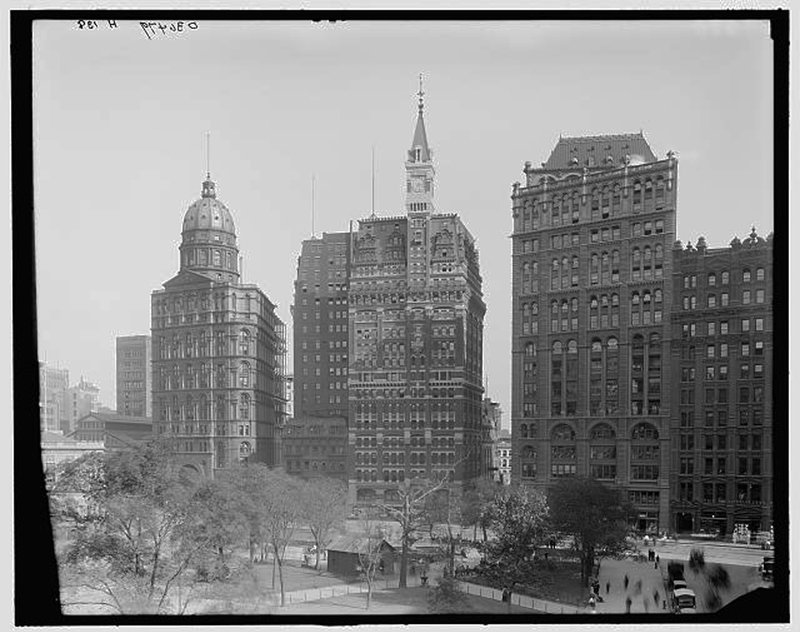
Throughout 1898 the two men competed to dominate coverage of the Spanish-American War. For all of their ruthless competition with each other, one thing they agreed on was raising their newspapers’ wholesale prices; the extravagant expense of wartime coverage caused the Journal and World immense financial strain. The impact of the price hike immediately trickled down to their “newsies.”
Both newspapers relied on legions of young resellers, typically between ages 11 and 15, to get their publications into the hands of customers. Initially the young distributors had no complaints about the price increase, which raised the cost of newspapers to them from 50 to 60 cents per hundred papers. Public interest in the war fueled purchases, and the newsies were assured a profit. But when the war officially concluded in August 1898, neither Pulitzer nor Hearst conceded the 10-cent increase. A full year later overall circulation was down from wartime highs, and the newsies found themselves eating the cost of unsold editions. Come summer 1899, the boys decided they had had enough.
On July 19, downtown Manhattan’s young newspaper distributors assembled in City Hall Park, near Newspaper Row, and organized a union. They sent word to their counterparts in upper Manhattan, Harlem, Brooklyn, Long Island City and New Jersey that unless the Journal or World returned prices to their pre-war levels, they would strike. The next day, the newsies made good on their promise.
At Columbus Circle on 59th Street in Manhattan, unsuspecting drivers with trucks full of newspapers arrived to find more than 400 boys waiting for them. The strikers had decorated the scene, with banners on lampposts and newsstands. “Help the Newsboys,” one banner read; “Our Cause is Just,” another; “Don’t buy the World or Journal,” a third. After forming circles around the trucks, the newsies attacked the drivers and grabbed papers and ripped them to shreds. Other editions around the city met similar fates. Within days the strike spread to Staten Island, Yonkers, Mount Vernon, Troy and Rochester, New York; Asbury Park, Elizabeth, Patterson, Plainfield and Trenton, New Jersey; Fall River, Massachusetts and Providence, Rhode Island.
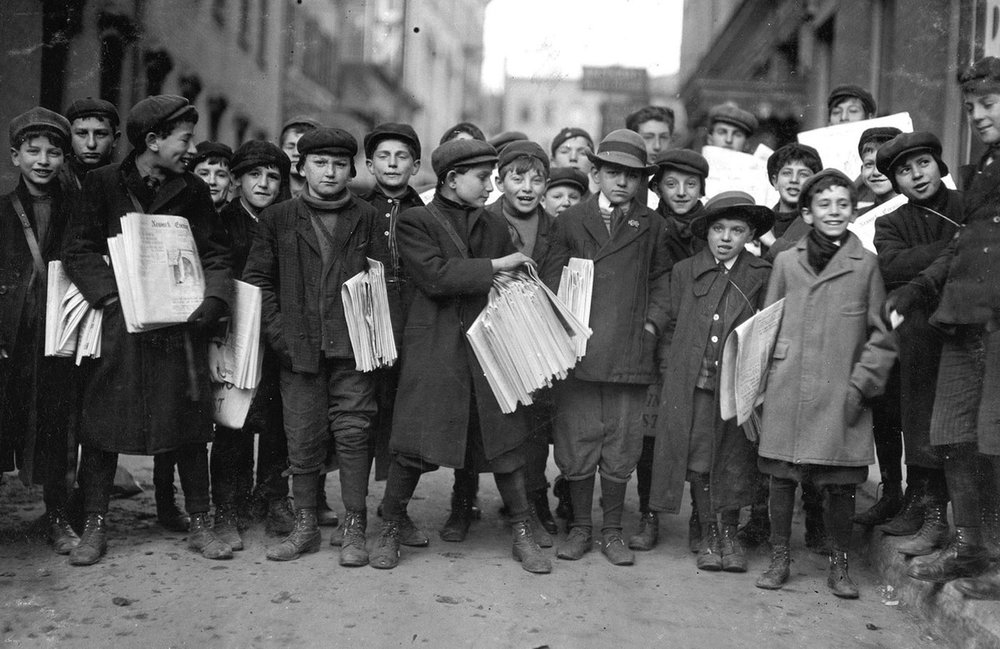
Certainly, a few street kids couldn’t pose a true business threat, the publishers thought at first. But as the newsies’ seriousness became clear, so did the Journal and World’s alarm. Two Journal delivery men were hospitalized after encounters with angry newsies. “The newsboy’s strike has grown into an extensive and menacing affair,” Pulitzer’s managing editor Don Seitz wrote in a memo to his boss. “It is proving a serious problem. Practically all the boys in New York and many of the adjacent towns have quit selling.” Advertisers, unable to reach their customers, began demanding refunds. Seitz met privately with the Journal’s editor-in-chief, Solomon Solis Carvalho, to work out a strategy. “[W]e have determined,” Seitz informed Pulitzer, “to hire as many men as possible for Monday to man selling points in a sufficient force to overwhelm any assault that may be made upon them…[Carvalho] did not state [the Journal’s] losses, but said that they were very, very heavy.”
Hearst and Pulitzer’s attempt to hire the city’s unhomed population as replacements for the newsies backfired. “I’m a Bowery bum,” another New York newspaper reported one of the recruited scabs saying, “and one of about a hundred that’s signed to take out Worlds and Journals to-morrow. But say, we ain’t a-going to do it...everyone of us has decided to stick by the newsboys and we won’t sell no papers.”
The public followed suit and refused to buy. It seemed Journal and World readers were in agreement with one of the strike’s organizers, Kid Blink. “Ain’t that ten cents worth as much to us as it is to Hearst and Pulitzer who are millionaires?” he asked a riled crowd of thousands of newsies gathered at New Irving Hall in Manhattan. “If they can’t spare it, how can we?”
It was the millionaires who conceded first. During the strike’s second week, Hearst and Pulitzer offered their sellers a new arrangement: Journal and World prices would remain at 60 cents, but going forward, the newsies would be refunded the cost of unsold papers. On August 2, the young distributors returned to their posts on the street, but with their union dissolved.
Throughout it all, Hearst astutely made no public statements. He had built his readership as a champion of the working class and coming out against the newsies would have been more damaging in the long run than the strike. Privately, though, Hearst hoped that his silence on the matter would cast Pulitzer as the prime villain. An army of young boys may temporarily have brought the country’s two most powerful publishers to their knees, but that was a battle Hearst was willing to concede.




